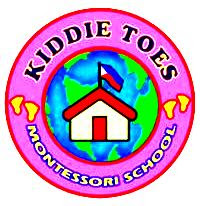 By David Biello
By David Biello Friday, September 29, 2006
Nearly 100 years ago, a physician opened a school in a poor section of Rome. In doing so, Maria Montessori went beyond being the first female doctor in Italy and became the pioneer of a new method of education. A curriculum based on close observations of children, the Montessori method includes an individualized curriculum and no grades, among other innovations. And a new study among children from Milwaukee seems to show that it delivers significant benefits over traditional public schools for the youngest students.
Psychologists Angeline Lillard of the University of Virginia and Nicole Else-Quest, now at Villanova University, surveyed children who had participated in a random lottery to attend a public Montessori school in Milwaukee. A total of 112 children (and their parents) elected to participate in the study in exchange for $100; 53 kids who "lost" that lottery and attended typical public schools were compared with 59 who "won" and attended Montessori schools. Surveys showed that the parents had similar incomes--ranging from $20,000 to $50,000 a year--and, because all had enrolled in the lottery, had presumably desired a Montessori education. "This strategy addressed the concern that parents who seek to enroll their children in a Montessori school are different from parents who do not," the psychologists write in the paper presenting their findings in the September 29 issue of Science.
Lillard and Else-Quest tested one set of children after completing primary education, at around five years old. Although ethnicity data was not collected, the majority of the students were African-American, according to Lillard. On a variety of tests, ranging from letter-word identification to math, these Montessori kids outscored their public school counterparts. When confronted with social issues, such as another child hoarding a swing, they more commonly resorted to reasoning--43 percent to 18 percent. And on tests of so-called executive function--the ability to adapt to changing rules that increase in complexity--Montessori children again outperformed their peers.
But these gains at an early age did not seem to translate directly to an older cohort of 12-year-olds that the researchers also tested; both Montessori and regularly schooled children performed equally well on the skills tests. But the older Montessori children did write better essays, based on blinded ratings by Lillard and a graduate student. "We don't know if these 12-year-olds, when they were five-year-olds, were more advanced or not," Lillard says. "What is notable regardless is that they're not doing worse than their peers despite the fact that they weren't being tested repeatedly on multiple-choice-type tests." The researchers also note that the 12-year-olds may have suffered from the newness of the Montessori school in their early education, as the method often relies on peer teaching.
Lillard plans to continue following these students throughout their academic lives to assess the overall effect, as well as expanding the study to new schools in new places and different income levels. She will also be assessing what specific parts of the Montessori method deliver these improvements. "This was very authentically implemented Montessori," she says. "It's actually a fairly small percentage of schools that are this strict. How much can you change Montessori and still have these outcomes? Or what are the most important practices?"
Source:
http://www.scientificamerican.com/article.cfm?id=students-prosper-with-mon&print=true



